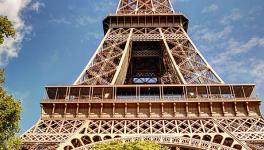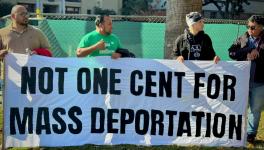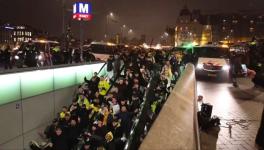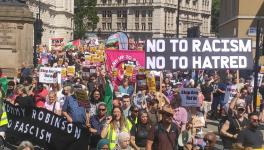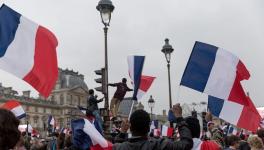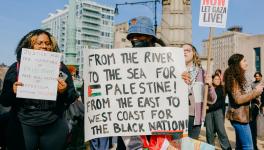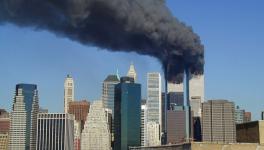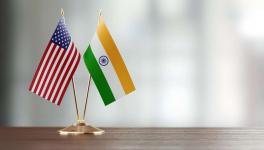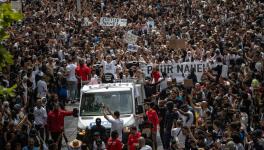Black Lives Matter: A New York Protester’s First-Hand Account
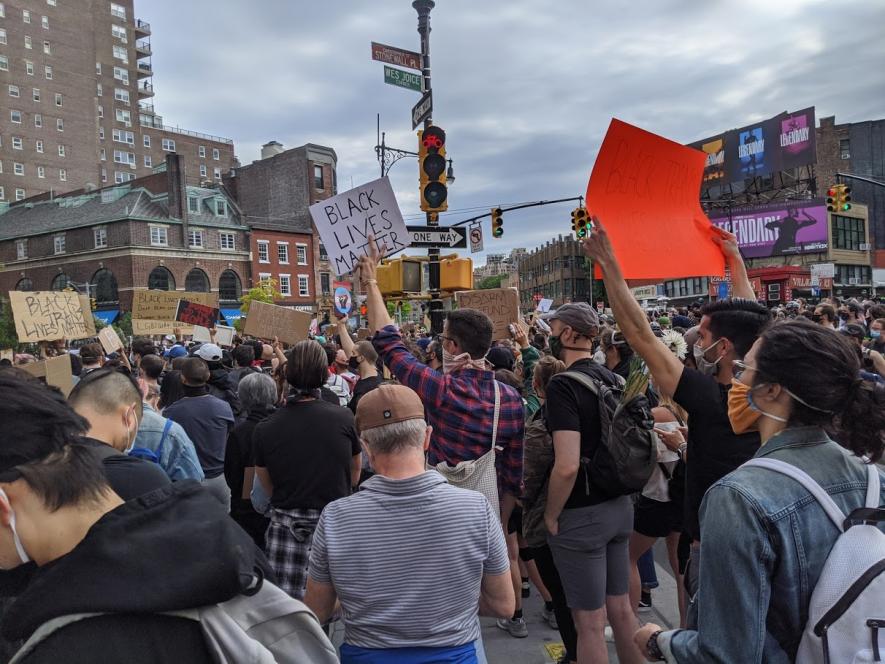
09 June Saurav Sarkar Protests NY East.
I’ve never really believed in justice, but today was the tenth consecutive day we marched in the streets of New York City for justice for George Floyd, Breonna Taylor, Jemel Floyd, Terrence Sterling, Eric Garner, Amadou Diallo, Abner Louima, and so many other Black people who have lost their lives to or been brutalised by police forces of the United States. And justice seems to be coming at last.
It started raucous, riotous, ungovernable two Fridays ago and the protests have continued through today. We have marched through rain, marched through police beatings and arrests, and marched through the first curfew imposed on this great city since World War II. I have seen smashed windows and anti-police graffiti and bridges the size of the Howrah Bridge overtaken by enormous crowds.
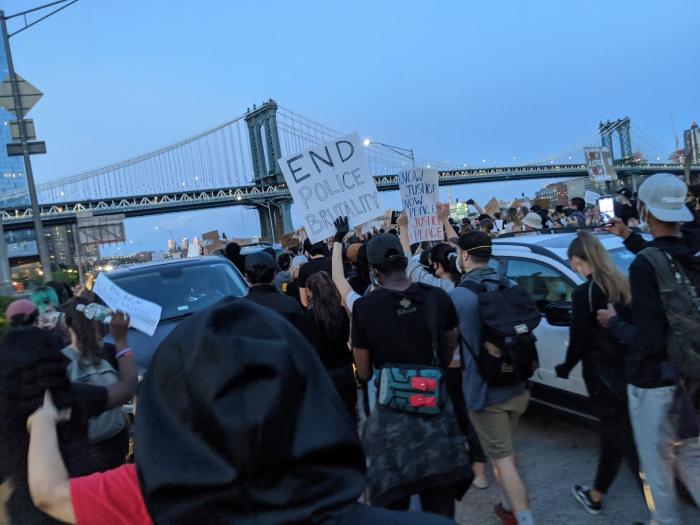
I have been lucky enough to escape any violence at the hands of the police, which is basically the only violence I have witnessed during the protests. The world saw on social media a New York Police Department car ram a crowd of protesters. I saw them charge with their batons unleashed into a kneeling crowd audibly and accurately saying that they were engaged in peaceful protest. I saw people pepper sprayed, had friends pushed to the ground, and had to run to avoid being beaten.
Now the marches are more pacified, in New York anyway. What has remained constant, though, is the steady stream of support from New Yorkers of seemingly all races for a movement that has suddenly picked up an enormous amount of steam. Bus drivers refuse to transport prisoners. Apartment dwellers en route hoot and holler in support. Cars going by beep their horns loudly in solidarity, sometimes in rhythm to the chants. Funds to secure bail for prisoners overflowed with cash and had to stop accepting donations.
At the top levels of city government, suddenly, talk of taking money from the bloated $6 billion budget of the New York Police Department and diverting it to the actual needs of the people is finally getting a hearing, even if reducing the police budget by the $1 billion demanded by activists would not even bring it to 2014 levels. The cry of defunding the police has suddenly become a mainstream position, and stronger positions like the abolition of the police department hopefully have the potential to gain traction.
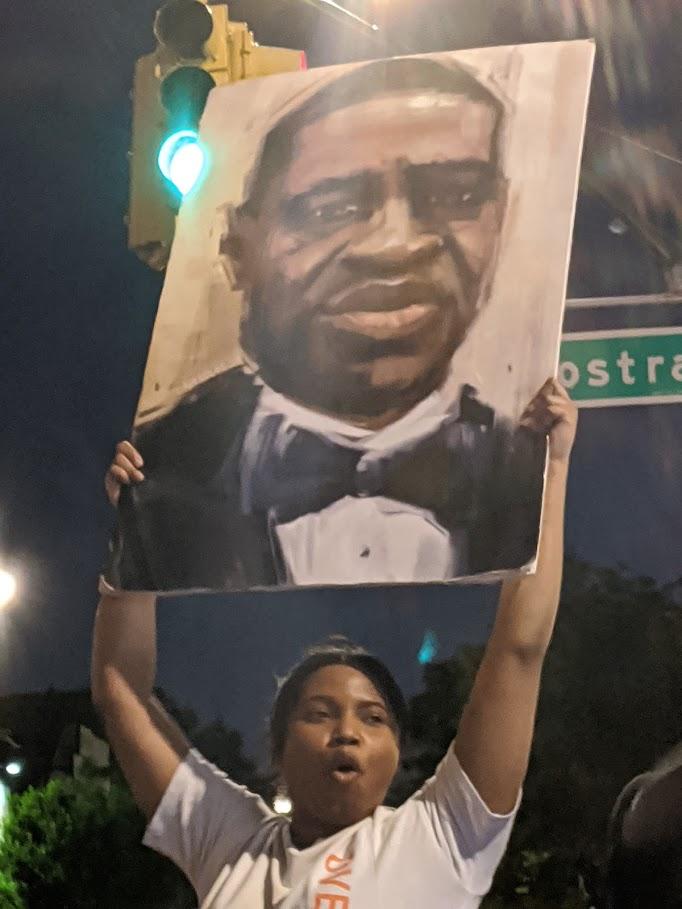
And it isn’t just in New York. Police officers are finally being fired and prosecuted when they behave in ways that would land any ordinary person in prison. The Mayor of Los Angeles plans to divert up to $150 million from the city’s police budget; a small sum compared to its size, but a victory nonetheless. The city council of Minneapolis, where George Floyd was killed and the tumult began, declared its intention to disband its police force though it remains to be seen what that will look like in reality.
Better late than never, and not nearly enough.
What changed? Why did Americans of all stripes suddenly start taking to the streets, even in small towns with histories of KKK activity, some even going so far as to destroy property or graffiti police cars in major cities?
There are many layers to this onion. On one level, it is the culmination of several generations of work by racial justice activists to turn a significant percentage of white people against white supremacy itself, particularly among young people.
This is especially the case since the Black Lives Matter movement emerged with the police murder of Michael Brown in Ferguson, Missouri in 2014. Someone who is 18 years old today has lived a third of their life hearing the cry for freedom that Black Lives Matter entails.
On another, the biting cuts to public welfare made in the name of austerity over several generations have reduced Americans to a people colonised by their own government. Young people struggle to stay afloat amidst mounting student debt and for those of colour, under the thumb of harsh policing tactics. The working poor and middle classes have little security, no wage growth, and seemingly no end to the misery being inflicted on them by their government. Black people have been subjected to the world-historic obscenity that is the prison industrial complex for 40 years.
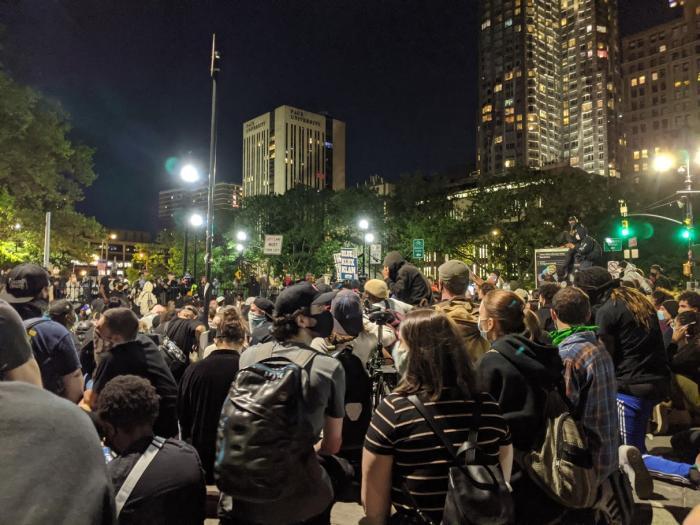
And finally, a pandemic accompanied by shelter-in-place orders amidst the greatest economic collapse since the Great Depression made it clear that ordinary Americans—and particularly Black and Brown ones—are the targets of a government that will still, in the worst of times, extend corporate largesse and direct more money to the rich rather than helping its own people. It wouldn’t even stop an unchecked disease from killing them needlessly. It wouldn’t even provide people with enough money to stay home, instead dangerously forcing them to go back to work even if they felt it unsafe, for many even during a supposed lockdown.
All this has happened with the full cooperation and initiative of both major political parties in the United States. So I would ask you, how would a people not rebel under these circumstances in response to the horrific video that so many saw? What alternative is there?
Sadly, one of the things I have noted is that I don’t see a lot of brown faces in the crowds. This may be due to the neighbourhoods where I have been protesting or the relatively small population we make up in the United States getting lost in the crowds, but it could be for myriad other reasons.
I could guess that the emphasis on professionalism, education, and playing by the rules that most Indian parents instil in their children plays no small role in their reluctance to take to the streets for the most part.
A kind of internal colonisation exists in the diaspora, taking the form of what we call the “model minority”—a group of people of colour who succeed economically and socially. Their very success is weaponised to be used as a bludgeon against Black Americans to blame the latter for their own socio-economic distress.
And of course there is the persistent anti-Black sentiment in many Indian American communities—particularly in the upper strata—whether in the form of tacit acceptance of systemic anti-Black racism or overt bigotry.
But these would only be guesses, and there are certainly exceptions even if I am right. I don’t have the answers.
I struggled with how to end this piece, and there is only one phrase that seems right: f*** the police. I say this because, to paraphrase Lilla Watson, I know that my own liberation is bound up with Black Americans’—as it is with Muslims’, Dalits’, and others’ in India and its diaspora.
As it is with yours.
The author is assistant editor of Labor Notes and editor of South Asia Labor Watch. You can follow his writings at saurav.substack.com. The views are personal.
Get the latest reports & analysis with people's perspective on Protests, movements & deep analytical videos, discussions of the current affairs in your Telegram app. Subscribe to NewsClick's Telegram channel & get Real-Time updates on stories, as they get published on our website.









